Several friends have sent me a picture of an EBITDAC coffee mug this week. As it states, EBITDAC stands for Earnings Before Interest, Taxes, Depreciation, Amortization and Coronavirus. Will this be the new measure of cash flow for valuing your business?
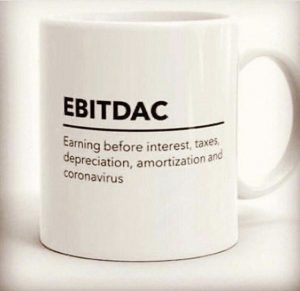 A bleak joke, but one that is on the minds of many business owners, especially Baby Boomers in their late 50s and 60s. Many were postponing their exit planning because business has been so good. As one client told me, “In March we had the best year in the history of my company. It looks like April might be the worst.”
A bleak joke, but one that is on the minds of many business owners, especially Baby Boomers in their late 50s and 60s. Many were postponing their exit planning because business has been so good. As one client told me, “In March we had the best year in the history of my company. It looks like April might be the worst.”
Downturns aren’t new, and recent history has more “Black Swan” downturns than most. Boomer owners have lived through the dot-com crash, 9-11, and the financial/housing bust. Even the Great Recession, however, was when most Boomers were in their mid-40s to early 60s. Most had ample time to recover, and to resume their business-building activities.
This downturn hits 4,000,000 Boomer owners when the youngest is at least 55 years old. The recovery time is uncertain, and regulatory restrictions on their businesses may be reimposed, perhaps more than once.
Factoring the Coronavirus in Valuations
Most Main Street acquisitions (under $3,000,000) rely on financial results over the previous five years for valuation. Those years have generally been good. In the middle market, professional buyers’ due diligence requests often seek results from 2008-2009 as an indicator of a business’s resilience in a contracting economy.
I think we can safely assume that both Main Street and mid-market acquirers will be carefully looking at the sustainability of your business through COVID-19. How much it affects your company’s valuation will depend largely on what type of business you own, and how you reacted to both any shutdown and the period immediately following.
One issue will be how buyers perceive the impact of Paycheck Protection Program loans and their forgiveness. It appears at the moment that the PPP loans will not be considered taxable income when forgiven. There are IRS rules for non-taxable loan forgiveness, but it will likely still appear as additional margin on your books. (The expenses it paid will still be deductible.)
You can be certain that buyers will be backing out the PPP loan forgiveness when valuing your business. They won’t be very interested in paying multiples of a one-time “free money” event.
EBITDAC : Short and Long Term Impact
Some businesses will see an immediate effect on their selling prices. Others may have a lingering change in how buyers look at their worth.
First, buyers will look at the scope of the coronavirus’ impact. Restaurants, caterers, event support, transportation (airlines, rental cars, party buses) and other hospitality related industries will be the worst. Not only are they the most affected, but they face the possibility that they resume with limitations on their business (social distancing in restaurants or limited passengers in vehicles, for example.) Any buyer would have to anticipate another period where they can’t generate substantial, or any, revenue.
If a business like those survives the shutdown, finding a buyer will be challenging. Third-party lenders will shy away from any involvement. Cash flow will remain tight, and credit will be harder to find.
The good news for those businesses is that the virus will end. When it is no longer a threat (presumably either because we find a vaccine, or we build herd immunity after a couple of seasons,) valuations should return to something more normal.
Other businesses will see valuations change over a longer period of time, and for different reasons. They will be judged either by their ability to recover quickly, or by how their model changes to take advantage of life after the virus.
Regardless of the impact, some owners will use the pandemic as an excuse for years to come. Others will adjust and move forward. (See my description of an owner who was still blaming the Great Recession a decade later here.)
Planning for Your Comeback
Whether your business is essential and working much like before the pandemic, or non-essential but functioning pretty well remotely. this virus is going to change your strategy.
For an obvious example, lets take video conferencing. How are you preparing your sales team for the return to normal? Will they be more efficient? Are they able to cold call? Should their expense accounts be lower? Or are they (and you) just waiting to go back to what they did before?
If you are a manufacturer or a contractor, perhaps your business has been very healthy during this lock-down. What will happen afterwards? Will new competitors push into your market to replace business that they lost? Might some customers fade away, while others discover a newfound need for your offerings?
If you are surviving, how can you thrive? Do you expect landlords with empty space to negotiate cheaper rents? Will some skilled employees be looking for new jobs? Should others become pricier because of increased demand for their skills? Can the automation you implemented for remote work be extended to new efficiencies or new opportunities?
EBITDAC and Post-Coronavirus Exit Planning
If you were anticipating retirement before the pandemic, are you accelerating your plans or putting them on hold for a while longer?
In either case, you’ll need to understand the impact of the virus on your company’s value. 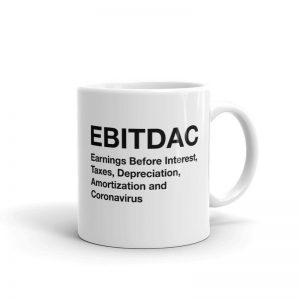 It may be dramatic and immediate, or it may be only obvious afterwards when your performance is matched against that of your peers.
It may be dramatic and immediate, or it may be only obvious afterwards when your performance is matched against that of your peers.
The definition of a Black Swan is “An unpredictable or unforeseen event, typically one with extreme consequences.” COVID-19 certainly fits the definition. It already has extreme consequences, but many of those are yet to come.
It’s not hard to figure out. Those who plan for a different world will do better than those who are taken by surprise. In either case, the impact of the “C” in EBITDAC will greatly influence any value generated by your transition from your business.
 You could probably throw in a couple of offshoots like ISO 9000, Open Book Management, Six Sigma, Balanced Scorecards and Net Promoter Score. All have metrics (Key Performance Indicators) to measure their effectiveness.
You could probably throw in a couple of offshoots like ISO 9000, Open Book Management, Six Sigma, Balanced Scorecards and Net Promoter Score. All have metrics (Key Performance Indicators) to measure their effectiveness.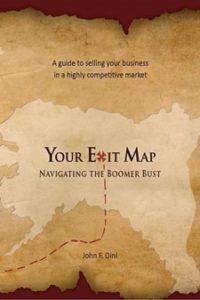
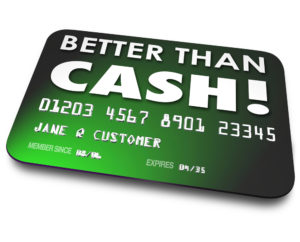 In a competitive credit environment, advertising for the revolving charge cards was directed to the pleasures of paying for something after you already enjoyed the use of it. The struggle of saving for a long time before purchasing was portrayed as foolish and unnecessary. In the 1980s and ’90s Baby Boomers on the quest for material success embraced the concept wholeheartedly.
In a competitive credit environment, advertising for the revolving charge cards was directed to the pleasures of paying for something after you already enjoyed the use of it. The struggle of saving for a long time before purchasing was portrayed as foolish and unnecessary. In the 1980s and ’90s Baby Boomers on the quest for material success embraced the concept wholeheartedly. Pride has characteristics that are easily recognizable in some owners. In meetings, do you do all the talking? Do you complain that you are the only one who has new ideas? Does everyone come to you for the solutions to any and every problem? Worse yet, do you insist on it? Do you reprimand employees for making decisions that, while they might work, aren’t exactly the way you would have done it?
Pride has characteristics that are easily recognizable in some owners. In meetings, do you do all the talking? Do you complain that you are the only one who has new ideas? Does everyone come to you for the solutions to any and every problem? Worse yet, do you insist on it? Do you reprimand employees for making decisions that, while they might work, aren’t exactly the way you would have done it?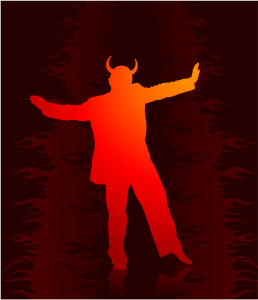 There is something to be said for any concept that catches the public imagination for fifteen centuries. First postulated by Saint John Cassian around 400 AD, the sins were codified by Pope Gregory the Great in the late sixth century, and popularized by Dante Alighieri in “The Divine Comedy” in 1315. They remain present on a daily basis in many businesses through the 21st century, 700 years on.
There is something to be said for any concept that catches the public imagination for fifteen centuries. First postulated by Saint John Cassian around 400 AD, the sins were codified by Pope Gregory the Great in the late sixth century, and popularized by Dante Alighieri in “The Divine Comedy” in 1315. They remain present on a daily basis in many businesses through the 21st century, 700 years on.